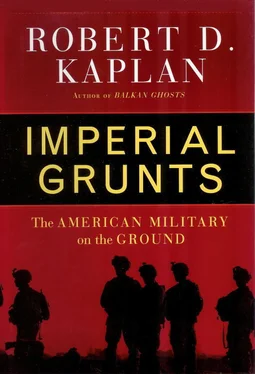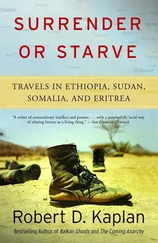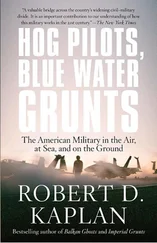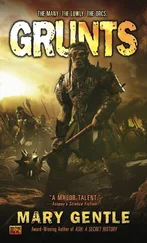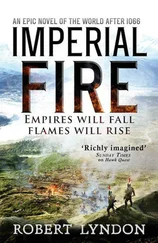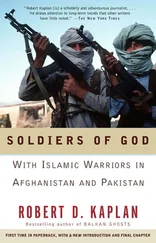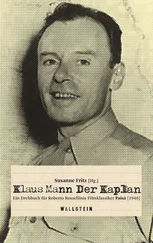The process was like writing and performing a symphony whose complexity demanded that the main briefs be “fragged out” into smaller ones, dealing with different aspects of the task. For example, I attended a meeting dedicated to one matter only: arranging for Navy construction battalions to transport portable bunkers and other equipment to be used at the checkpoints set up around the city prior to the assault.
All the elements came together fast because of a factor largely missing from civilian life, the incontestability of command; meetings quickly resulted in priorities, which in turn led to decisions. As soon as the ranking officer decided on something, the debate moved on to the next point.
“Armies have always been viewed with suspicion in democratic societies because they are the least democratic of all social institutions,” writes the military historian Byron Farwell. “They are, in fact, not democratic at all. Governments which have tried to… blur the distinction between officer and man have not been successful. Armies,” Farwell goes on, “stand as disturbing reminders that democratic processes are not always the best, living and perpetual proof that, in at least this one area, the caste system works.” 15That was certainly true in the planning of the attack on Al-Fallujah.
———
At the Combat Operations Center, the room was packed as Maj. Farnum delivered his penultimate brief before 1/5 departed for Al-Fallujah. Among those in attendance were the four battle captains who would bear the heaviest load of risk and personal responsibility for the assault: Alpha Company commander, Capt. Philip Treglia; Bravo Company commander, Capt. Jason Smith; Charlie Company commander, Capt. Wilbert Dickens of Rich Square, North Carolina; and Capt. Blair Sokol of Newark, Delaware, the commander of Weapons Company. [84] Pronounced New- ark, to distinguish it from Newark, New Jersey.
Capt. Sokol, awarded the Bronze Star for valor in OIF-I, was a towering, taciturn man who had been a football lineman at the Naval Academy. He was also a tactical genius-in-the-making. This time he would remain slightly in the rear, in order to run the other three captains, and principally to deal with “deconfliction” issues:
When three companies assault a city in order to box in the enemy, the biggest danger is often not the enemy itself but friendly fire. And with 5.56mm rounds able to travel several miles before losing velocity, avoiding friendly fire in city streets—and at the same time orchestrating an attack from different directions—requires an uncommon instinct for spatial geometry.
Once more, Maj. Farnum went over the basics of the plan. The 1st of the 5th would bear responsibility for capturing the southern half of Al-Fallujah, the part below a main thoroughfare that the U.S. military had dubbed “Michigan.” The northern half of the city would be taken by the 2nd Battalion of the 1st Marines, or 2/1. But because the southern half of Al-Fallujah contained a sparsely populated industrial zone and an adjacent commercial area, both of which could be captured relatively easily, 1/5 would be the first battalion to establish a substantial foothold in the city.
Prior to the assault, nine traffic control points would be set up around Al-Fallujah to create a “blocking cordon,” isolating it and preventing insurgents, for the most part, from leaving or entering. Following that, the two battalions would occupy the city’s outskirts, using the new forward operating bases to prosecute raids for HVTs (high-value targets). Concomitantly, there would be IO (information operations), whose underlying message would be to convince the city’s inhabitants that the Marines represented the “superior tribe” there. Selling democracy not just in Al-Fallujah but elsewhere in the Sunni Triangle was an idea that had been losing traction for some time now.
One officer told me: “This is a flash-bang strategy. Stun the bad guys with aggressive fire, then psy-ops the shit out of them, always coming back to the theme of the inevitability of the superior tribe.”
The final stage would be the handover of the city to the new Iraqi Police, the new Iraqi Army, and the American-created Iraqi Civil Defense Corps (ICDC). Marines listened politely to this, but I don’t think they believed it. The ICDC and the Iraqi Police in the Al-Fallujah area were said to be deserting in droves, at the company level no less. I had found that the ICDC and the police were loyal where the Americans were strong and disloyal where there was a perception of American weakness. People in all cultures gravitate toward power and are susceptible to intimidation by thugs and chieftains. But the chieftain mentality was particularly prevalent in Iraq. [85] Actually, one of the finest expositions of the chieftain phenomenon can be found in Bing West’s 1972 classic about Vietnam, The Village (New York: Pocket Books), pp. 328–29: “In Dai Loc district… one night in early November the VC had laid waste several villages with the thoroughness and savagery of Apache raiders, despite the nearby presence of a Marine battalion. As a consequence of the fear thus instilled, the people afterward refused even American medcaps for their wounds. One general thought that the disruption proved his point that the people went with the winner—the incident at Dai Loc had happened because the people had not been provided security. ‘Give them security,’ he said, ‘and they’ll give you information and cooperation.’”
As Maj. Farnum went through his brief, it dawned on everyone inside the room that Operation Valiant Resolve, as it was code-named, represented the opposite of what the Marines had come to Iraq to do. Instead of nation-building—what the Marines called SASO—they were about to lead a theater-level attack on a large urban area, with assistance from the CIA and the Army’s Delta force, 5th Special Forces group, and the psy-ops branch of Special Operations Command. Air assets would include AC-130 spectral gunships, Marine Cobra and UH-1D Huey helicopters, unmanned Pioneer surveillance planes, and Air Force F-15s.
The truth was, that what the Marines called OIF-II had quite literally become OIF-II. Like Desert Storm, Operation Iraqi Freedom of 2003 had been a relatively painless and dazzling success only because it was incomplete. In both cases, victory was declared before the hard part of the operation had been attempted. In 1991 in Desert Storm, key Republican Guard units had been left intact, allowing the regime to survive; in OIF-I, cities and towns like Al-Fallujah and Al-Karmah had largely been bypassed, without eradicating pro-regime elements in those places.
It was a classic American syndrome: an aversion to sustained engagement overseas that leads to more carnage, rather than less. The Americans wanted clean end-states and victory parades. Imperialism, though, is about never-ending involvement. And deny it all they wanted, American officials were in an imperial situation, even if the Bush administration and the troops themselves, to say nothing of the public, were uncomfortable with the word.
Maj. Farnum reiterated that Operation Valiant Resolve was not retribution for the butchery of March 31. “It’s just that the problem of Fallujah has festered to the point where dealing with it represents a pivot opportunity to improve the atmosphere in the entire AOR.”
He then deferred to Lt. Col. Byrne, who, because of his higher rank and the fact of his command over the battalion, needed to succinctly inspire the grunts for close-quarters combat against jihadists and the most hardened elements of the old regime. “Gents, let me tell you what this is really about. It’s about killing shitheads. The CG [commanding general of the 1st Division, Jim Mattis] has changed the op order from ‘capture or kill’ the enemy to ‘kill or capture.’ He wants the emphasis on ‘kill.’
Читать дальше
